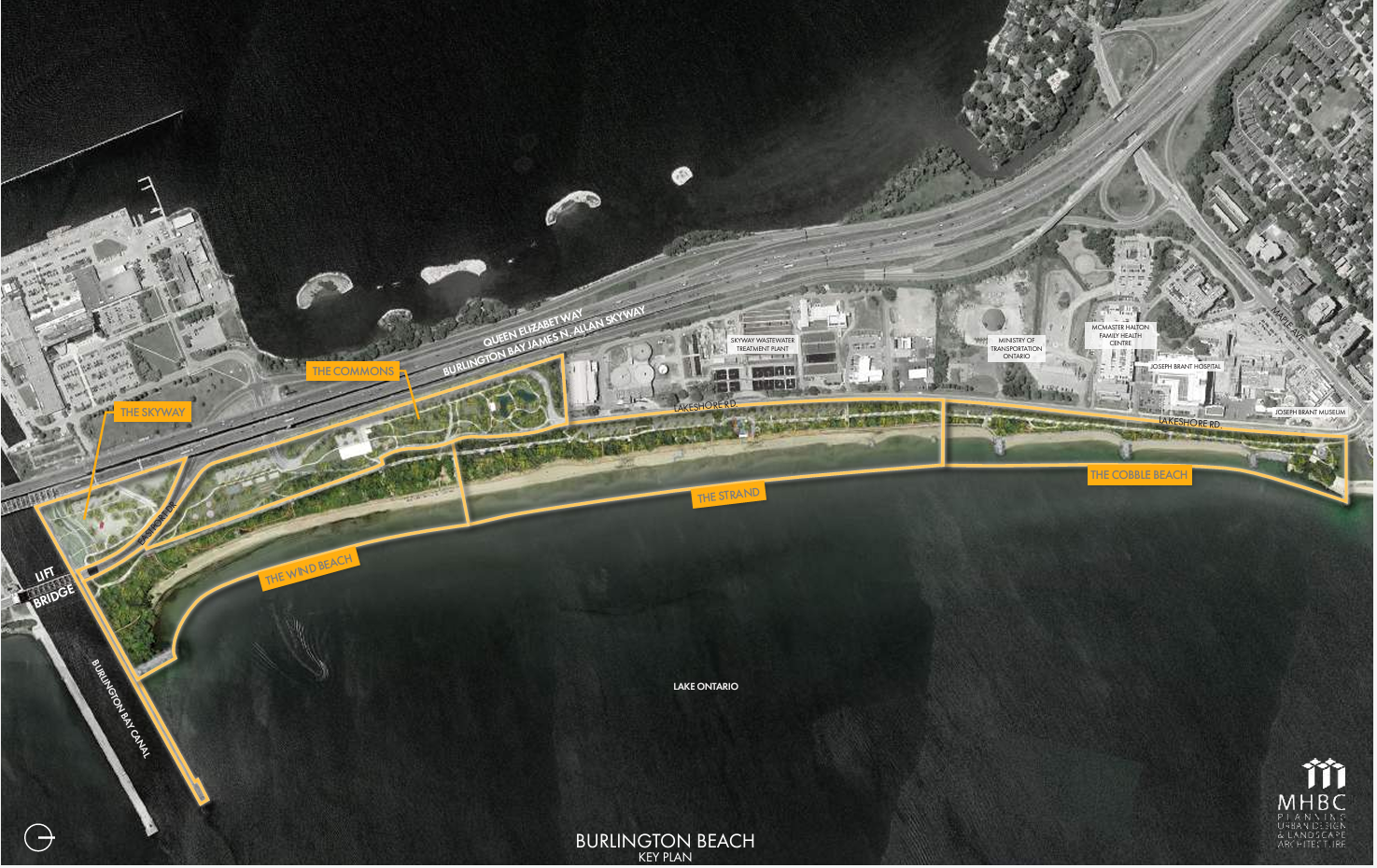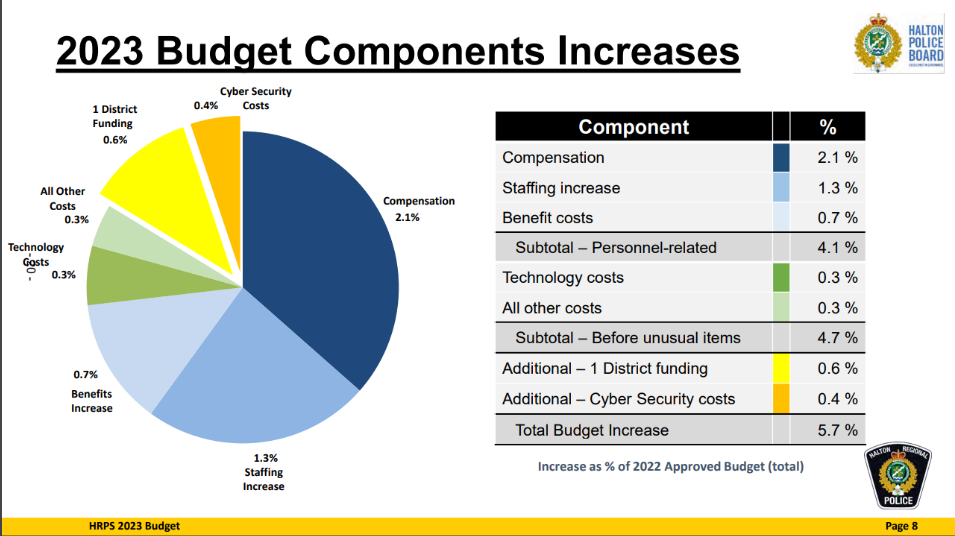By Maisha Hasan, Local Journalism Initiative Reporter
Do you remember how high Lake Ontario was back in 2019? There were periods when Burlington Beach’s sand was not even visible. Not only did that mean people couldn’t enjoy walking on the beach — it also caused an increase in beach erosion.
Halton Region and the City of Burlington are working together alongside private companies to restore dunes and natural habitats, add boardwalks, and clean up the beach, all part of the Burlington Beach Waterfront Park Master Plan. Most recently, in fall 2023, the efforts to rehabilitate the dunes, a process that restores dunes to benefit the coastline and protect the beach, were undertaken by Zuzek Inc.
The Master Plan, with its multi-phase approach, has been in play since 2015 to better the local ecosystem using new approaches, controlling and managing access (fencing, closing off informal trails, co-designing parking, etc.), beach grooming, and general maintenance. A March 2023 update of the Burlington Beach Master Plan includes a Phased Implementation Plan that covers all Master Plan elements over a 12-year period, taking place between Year 1 (2023) and Year 12 (2035). Though twelve years is a long time, every phase is crafted to contribute to the overall Master Plan. The first phase would be the construction of Cobble Beach as this will support the beach and its back dunes, taking multiple construction seasons to complete.
Due to the requirement of heavy equipment for some portions of work on the Cobble Beach, this work was slated to begin earlier than work on the areas called the Strand and the Wind Beach. Other areas include the Commons and the Skyway. A number of elements of the 2015 Master Plan were deemed to be not feasible in the 2023 updates (some trails, for example, and proposed gas fire circles); 2023 also saw technical reports on possible relocation strategies for nine transmission towers on the beach. Burying the cables is the only technically feasible option still available, though the cost would be high, and no plans to undertake this work are currently in the works.
Work already completed includes an upgraded gazebo, tree and perennial plantings, a concrete walkway, pedestrian lighting and benches, and other concrete work. The city’s website notes that cultural heritage planning and implementation, additional boardwalks, habitat restoration and dune protection, and associated technical studies and monitoring, are all part of the current phase of the Master Plan.
As mentioned earlier, the dune rehabilitation and protection work started late last year, to mitigate some of the human disturbance this rare ecosystem has experienced over many years. As well as the beach’s use as a recreation area, climate change has resulted in more frequent high water levels, and dunes must be healthy in order to increase resilience against those high water levels. While nature-based solutions are used where possible, some dunes need to be topped up to an elevation that will allow for resilience.
When discussing dunes with Peter Zuzek from Zuzek Inc., the person and company behind the dune rehabilitation project, he gave me insight into the reconstruction of these dunes and the overall process.
Zuzek says:
Our work is part of a provincially-funded program we created called ‘Building Beach Resilience in Ontario.’ The work started following the record-setting lake levels in 2019 and 2020 in the Great Lakes, when beaches, especially high-use urban beaches, were dramatically and negatively impacted by beach erosion and flooding. Burlington Beach was essentially closed for two years in 2017 and 2019 when the dunes eroded and the beach was completely flooded.
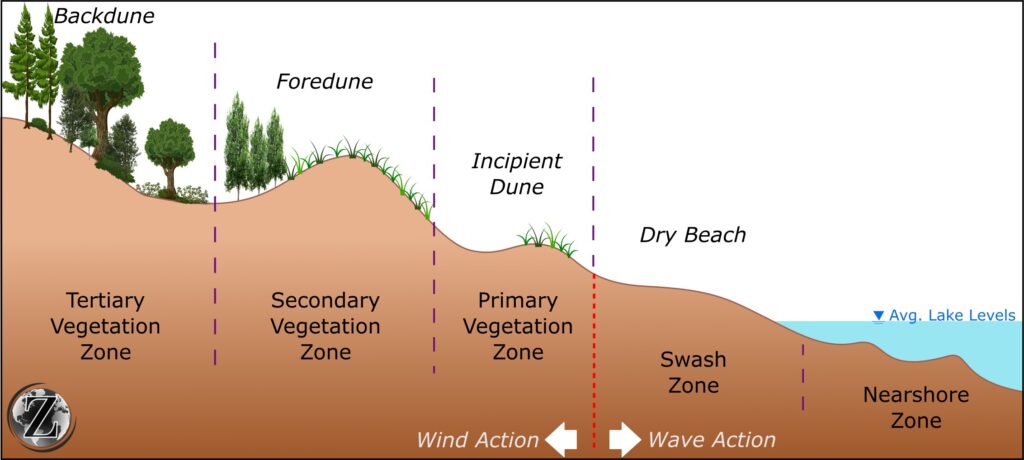
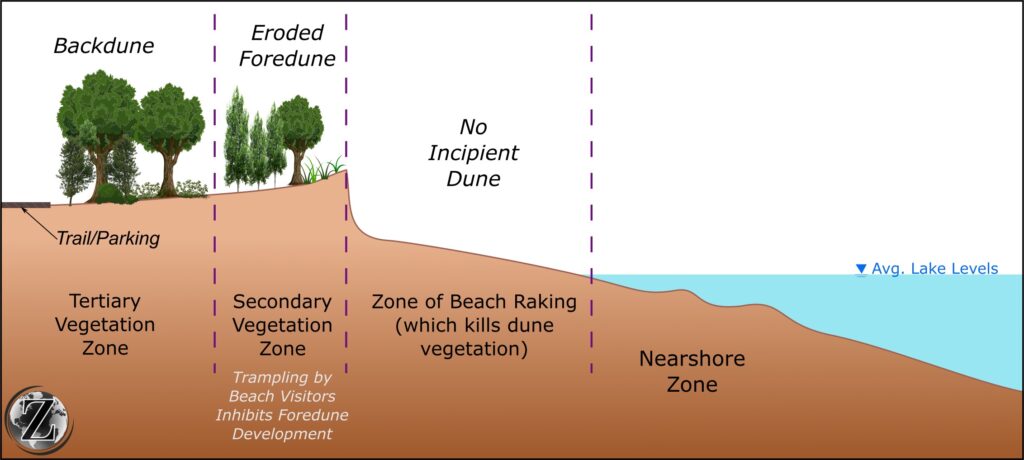
Working at Burlington Beach, Wasaga Beach, and Sauble Beach, we quickly realized that beach resilience to periods of high lake levels was directly related to the health of the incipient dunes and foredunes, which are located at the transition from the open sand beach to the backshore. Beaches that weathered the high lakes just fine and still had recreational space for visitors had healthy dunes, such as Sauble Beach.
Other locations that have lost their foredunes due to development and visitor pressure suffered greatly in 2017 and 2019. The two diagrams [above] highlight the differences graphically.

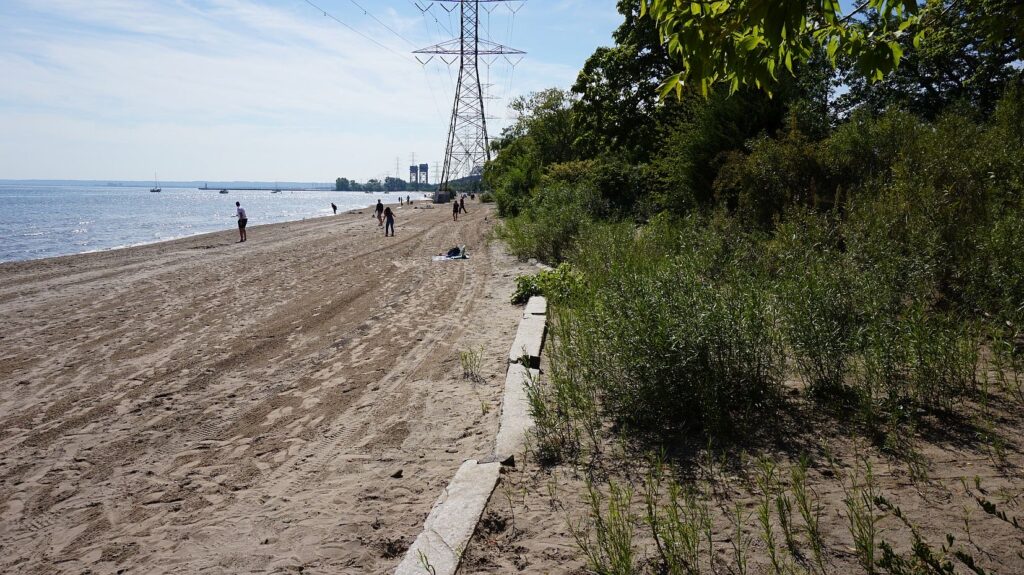
So, we created Building Beach Resilience and have been partnering with local environmental groups like BurlingtonGreen to start restoring foredunes in urban environments. Beaches can recover from periods of high lake levels (see the photos above, taken from the same location at Burlington Beach in June 2019, at record-high lake levels, and September 2021, during average lake levels). Healthy dunes make this recovery easier and increase beach resilience.
After learning about dunes from Zuzek, as I truly only thought of the novel Dune when I first heard about it, I interviewed Kale Black from BurlingtonGreen to learn more about the community aspect of this project.
What did starting this project look like?
It’s technically Conversation Halton that owns the land, they’re the official stewards of it. Then we have a rental agreement with the city to have a space there. Already, just in our first few years of working at the beach, we’ve tried to connect with what was happening there. We started working with the organization called “A Greener Future,” they were doing micro-plastic hunting across beaches and lake cleanups all across Lake Ontario. That has been wonderful because they have been sort of doing programming at the beach. Through them, we’ve been able to connect more with Burlington folk.

What can the Burlington community do to get involved?
We do a lot of beach cleanup throughout the year, some businesses will do little volunteer days, last year we had a couple of businesses that did beach cleanup and restoration.
So there is both the work at the beach which is impactful and important, and we’re really lucky, it’s the only dune ecosystem in Halton, it’s environmentally sensitive and home to three species at risk.
Why does community involvement matter?
I didn’t learn to care for and appreciate the earth till I was much older, in my late teens and twenties. I was just like “I don’t know, it’s a tree — I’m playing video games, leave me alone!” So programs like [those] that we offer, if I were to attend them when I was younger, it definitely would have changed my mindset and got me to appreciate nature earlier. It may seem like a two-hour webinar, but we hope it connects people to nature and has a wide range of programs because biodiversity exists everywhere, in humans too.
Moving forward, maintenance, monitoring, and rehabilitation must continue to ensure the resilience of the dunes. Invasive plants will be removed, and native vegetation planted. The updated Master Plan noted that a request for proposal (RFP) would be released in fall 2023 for a detailed design of the Cobble Beach, to be awarded by January 2024; RFPs should be released for detailed design of Master Plan elements for the Strand and Wind Beach in spring of this year. Other elements of planning and design work are also “assumed” to be in the works for 2024, according to the updated Master Plan.
Correction notice: we have corrected a mention of Burlington Beach to BurlingtonGreen in this article, as BurlingtonGreen is the organization that Zuzek Inc. partnered with. Our apologies for any inconvenience.

